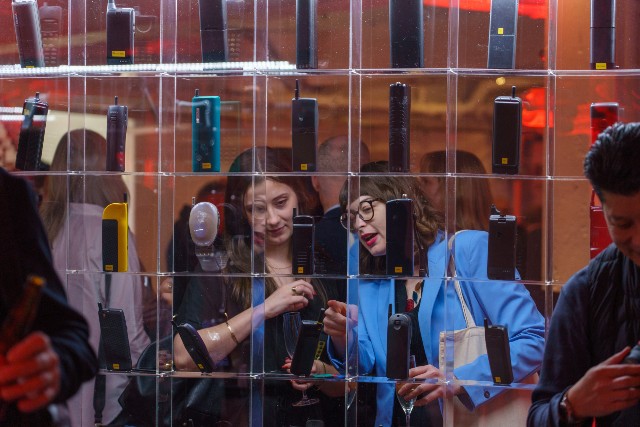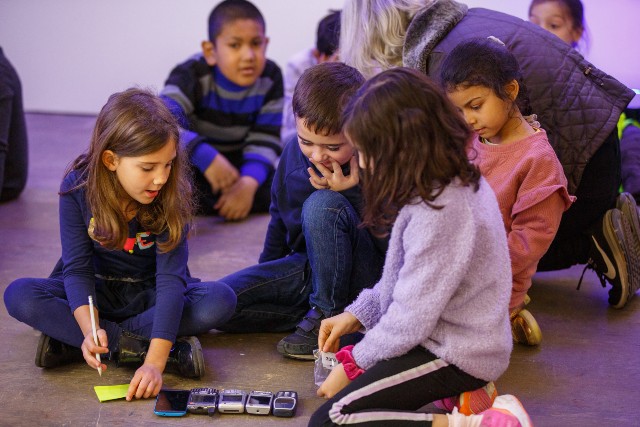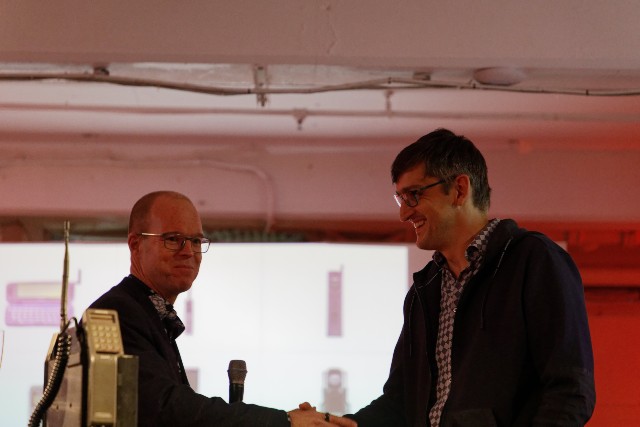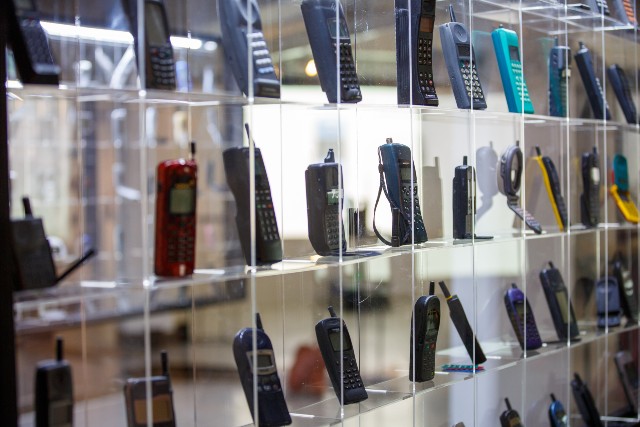

Mobile News was lucky enough to get a golden ticket to last month’s opening of the Mobile Phone Museum, a 17-year dream of Ben Wood that has finally come to fruition. We got the low-down
Towards the end of last month, the Mobile Phone Museum finally arrived, with the grand opening marked by a one-off event.
Its establishment is the culmination of years of hard work and planning by founders Ben Wood and Matt Chatterley.
The museum, a charity that has been heavily supported by Vodafone through a five-year partnership, is now live online and currently features more than 2,000 phones from over 200 manufacturers – with the numbers set to grow.
Mobile News was fortunate to have a golden ticket to the event, which was held as an exhibition in Soho and attended by around 150 fortunate people, including myself.
Wood, who is also chief of research at CCS Insight, first thought up the idea for the museum way back in 2004, long before the modern-day smartphone was a thing and at a time when feature phones and mobile cameras were in the earlier stages of innovation.
He later joined forces with fellow mobile industry veteran and phone collector Chatterley, and after their vision gathered pace, the museum has become a reality for the pair.
We spoke to Wood to catch up after the event, and find out more about the origins of the museum and what the future holds for the initiative.

What are your thoughts on the event?
For me, the event was the culmination of years and years of work, and it was incredible to see a personal passion project come to fruition. What was lovely about the event was that not only was it a way to formally launch the Mobile Phone Museum and have the focal point to really drive publicity on the website – which we’ve been working on now for over two years – but also an opportunity to see many of the people that have been so supportive of the project and bring together so many people who have been involved in this amazing industry. Everything that happened on the evening was made possible by Vodafone’s amazing generosity.
Vodafone has really bought into the project and has made a multi-year investment in the charity, putting us on a firm financial footing to keep us going forward.
You seemed to be quite emotional during your speech?
Yeah, I was quite emotional [laughs]; I forgot to thank my wife during my speech, which was quite unforgivable! She’s also been very supportive and is running the educational side of things.
I’m still coming down to Earth after it all, and I’m really chuffed with how it went. It’s a shame it was for one night only.
What’s the purpose of the museum?
We want it to be a rich learning resource and a way to inspire young people to go on to create incredible mobile innovations of their own in the future.
At the launch, we had Soho Primary School come along too, because one of the pillars of the venture is that it’s a means to drive interest from the next generation of engineers and designers in what we’re doing.
We’re going to ramp up our visits into schools to try and deliver a positive view on mobile phones. They can often be seen as a distraction, but we can talk about their history and how the UK was the epicentre of phone development over the years.
Why are you trying to inspire the next generation?
I hope it can educate people to realise that the UK has been so pivotal in this industry. We still have some big companies here – whether it’s Arm or Vodafone or BT – who are all massively important in this communications world.
We have individuals such as Jony Ive, one of the most famous designers of our time who has been involved in things including the iPhone.
Although I don’t think we’ll get back to the point that you’ll see a major mobile phone brand emerge from the UK, I certainly think you’ll see talent from engineering and design that could play an important role. The Mobile Phone Museum is very much a design story.
The only challenges are that phones have got a bit boring – or what I like to call the ‘sea of sameness’ since the iPhone – but I am optimistic that with the advent of foldables and flexible display technology, we may see a new wave of innovation and that could be quite exciting.

Do you have plans for future events?
The event was a one-time only, golden ticket. But the goal is for us to now establish the museum and build out the collection. We’ve already had some phenomenal donations; we have a most-wanted page and I’ve already got a couple of donations on their way to me.
I want to consolidate the museum. We have all the phones we’re currently showcasing on the website, even if there’s not a photograph yet; it’s just been costly to get the photography in place yet. But we want to get all the photography and descriptions done.
What are your long-term aims for the museum?
In 2025, which will be 40 years since the first mobile phone call was made in the UK, we’d like to have a pop- up exhibition in place for several weeks or months in conjunction with Vodafone at somewhere such as the Design Museum or Science Museum.
And the thing is that if we tie up something with one of these museums, exhibitions often end up going on the road globally, so who knows?
We’re also looking for more sponsors. Vodafone has come in as an anchor sponsor, but we think a couple more would be great to really give us the resources we want for our ambitions, and to keep building and employ someone to overlook the education side of things.
How did you bring the museum to reality?
There’s a lot more to do, but just getting this far, I’m kind of pinching myself because a few years ago this was just a few phones in my garage.
Vodafone has been instrumental in this, as has Kamil Vacek. He’s an interesting character who comes from the Czech Republic, where he founded a [mobile brand support] company called TCCM and he’s an extremely successful entrepreneur over there.
Without him, this wouldn’t have happened: he’s been on my case about the museum and flew all the way over for the event, which shows his commitment.
Anyway, it also got to about 1,000 phones around the house that made me think I should really do something about it. The evenings and weekends will continue to be filled with us going through the phones and donations coming in.

What sparked your enthusiasm in mobile tech?
I got into the mobile industry by accident, and didn’t grow up thinking “I want to work in phones or comms technology”. I was interested in technology, but I didn’t leave university thinking that was what I was going to do. When I left university, my criterion for getting a job was to get on a graduate scheme.
I applied to a company called ‘Vodafone’, and they took me on and put me into their Vodata division. It’s given me the most remarkable career and so much in life. The phone is such an incredible part of society and I felt that someone needed to tell this story. Also, I wanted to give something back to the mobile industry that has been so good to me. So the Mobile Phone Museum is my legacy to it.
Nobody will remember Ben Wood the analyst, but they’ll remember the Mobile Phone Museum. One of my sons is a trustee of the charity, so we’ve got the next generation involved. I hope we’re creating something that will live on for a very long time to come.
What’s your favourite ever phone?
I’ve been asked this one a lot! There’s one that means the most to me, and it’s the Nokia 2110.
It’s quite a boring phone, but it’s important because it’s the first one I worked with when I went to work for Vodafone in 1994. It was one of the first really capable GSM phones.
When I joined the industry, I worked in the team that helped to launch text messaging and mobile data.
If you look at what the mobile phone has become and at those things, they’re so important.








